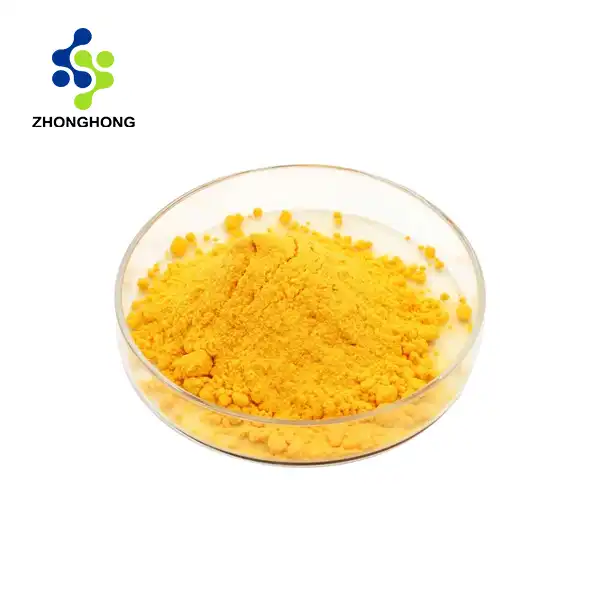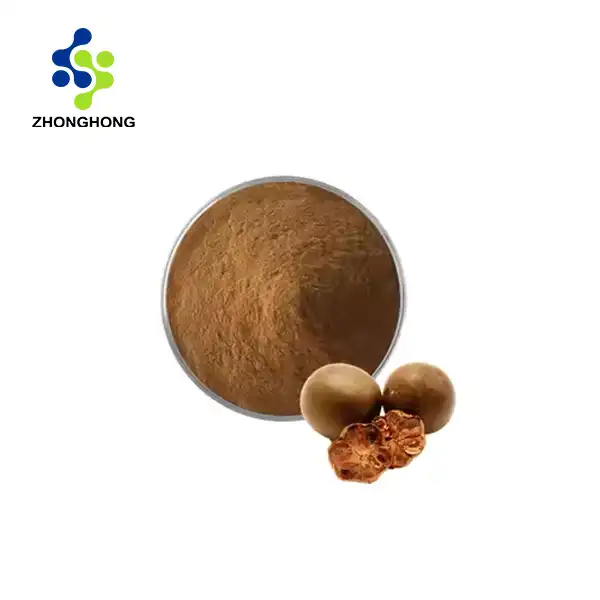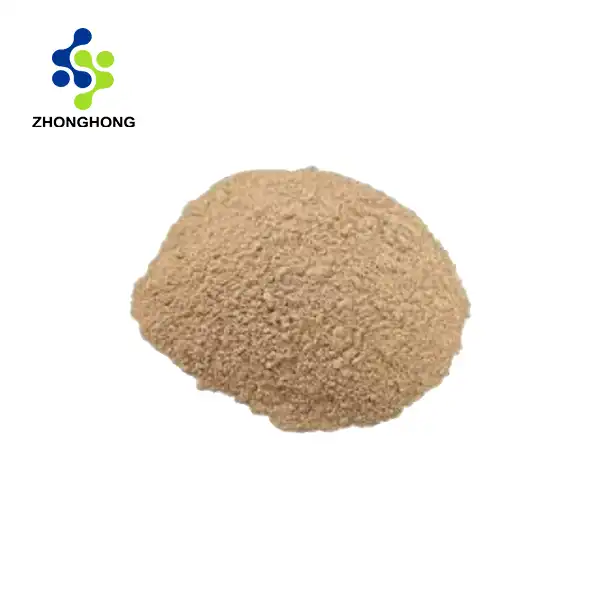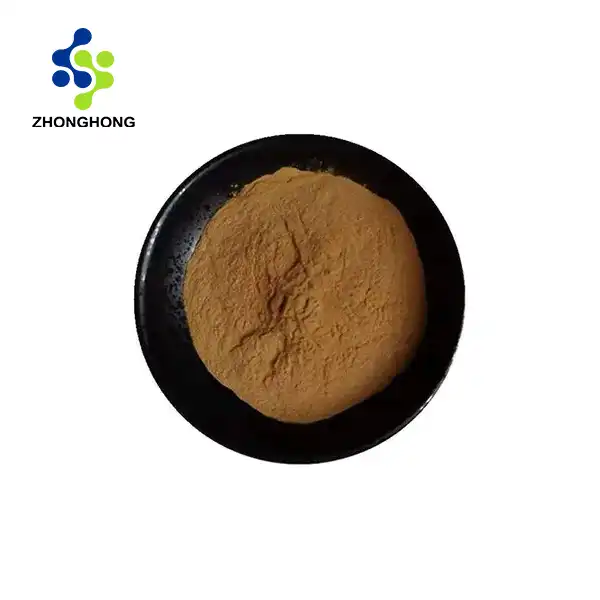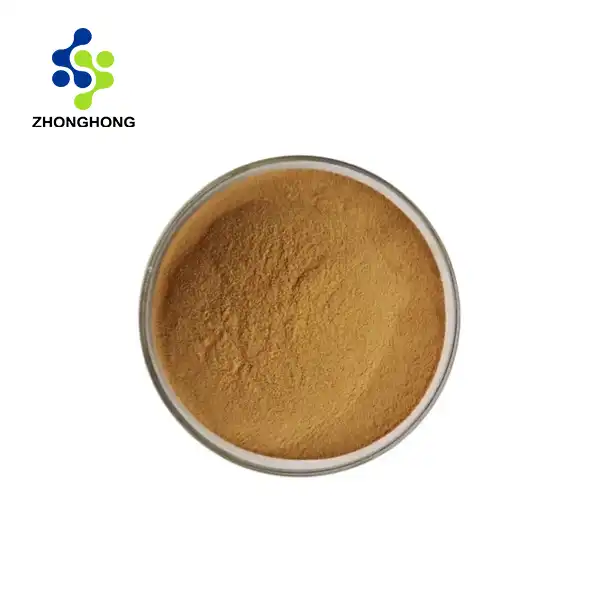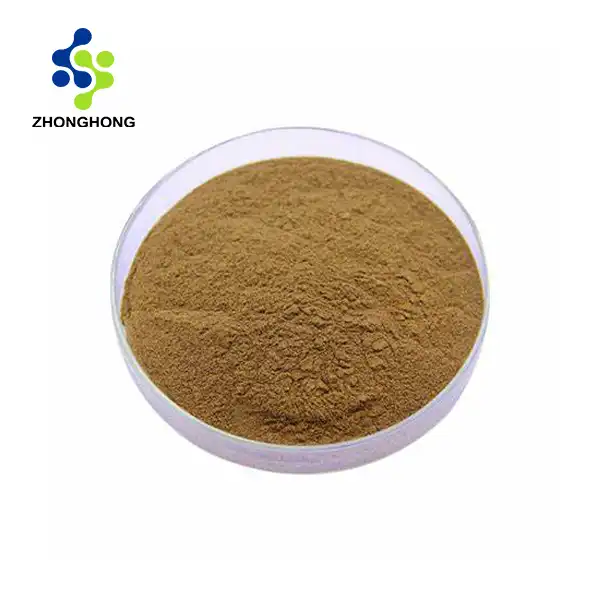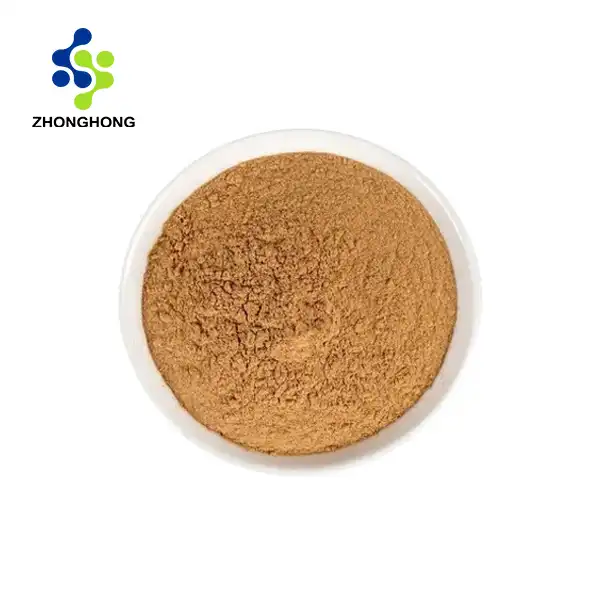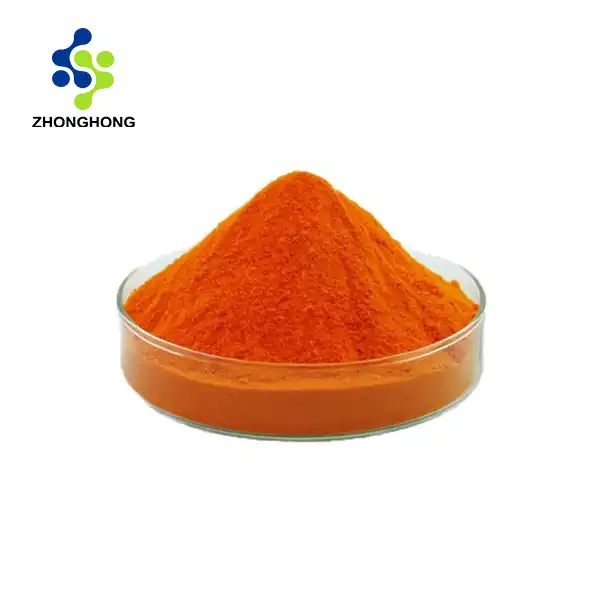How to Make Ashwagandha Root Extract?
2025-01-15 21:43:48
Ashwagandha (Withania somnifera) root extract is a powerful adaptogenic herb widely used in traditional Ayurvedic medicine. The process of creating high-quality Ashwagandha Root Extract Powder involves careful selection of raw materials, precise extraction methods, and stringent quality control measures. This comprehensive guide will walk you through the professional extraction process, key considerations, and advanced techniques used in modern pharmaceutical-grade production.
The production of Ashwagandha Root Extract Powder begins with selecting premium ashwagandha roots, typically harvested after 2-3 years of growth. The roots undergo thorough cleaning and sorting before being dried under controlled conditions. The extraction process primarily uses hydroalcoholic solvents, maintaining specific temperature and pressure parameters to ensure optimal extraction of bioactive compounds. Modern techniques employ advanced filtration systems and vacuum concentration to achieve standardized extracts with consistent withanolide content.
Advanced Extraction Techniques for Ashwagandha Processing
Modern Solvent Extraction Methods
The primary extraction method for producing high-quality Ashwagandha Root Extract Powder involves sophisticated solvent-based techniques. The process begins with carefully cleaned and dried ashwagandha roots being ground to a specific particle size, typically between 20-40 mesh. The ground material undergoes extraction using a mixture of food-grade ethanol and purified water in ratios ranging from 30:70 to 70:30, depending on the desired composition of the final extract. The extraction process occurs in temperature-controlled vessels, maintaining temperatures between 50-60°C for optimal extraction of bioactive compounds. Multiple extraction cycles ensure maximum yield of active constituents, with each cycle typically lasting 4-6 hours under constant agitation.
Concentration and Purification Steps

After the initial extraction, the solution undergoes multiple stages of filtration and concentration. The process starts with rough filtration using specialized filter aids, followed by fine filtration through membrane filters of decreasing pore sizes. The filtered extract is then concentrated using vacuum evaporation at temperatures below 60°C to preserve heat-sensitive compounds. Modern facilities employ multiple-effect evaporators to enhance energy efficiency while maintaining product quality. The concentrated extract undergoes decolorization using activated carbon treatment when necessary, followed by spray drying or freeze-drying to produce standardized Ashwagandha Root Extract Powder with consistent withanolide content.
Quality Control and Standardization
The final stages involve rigorous quality control measures to ensure the Ashwagandha Root Extract Powder meets international standards. This includes HPLC analysis for withanolide content, typically standardized to 2.5%, 5%, or 10% withanolides. Additional tests include heavy metal analysis, microbial testing, and residual solvent analysis using gas chromatography. The powder undergoes particle size analysis to ensure uniform distribution and proper flow characteristics. Each batch receives a certificate of analysis documenting all quality parameters, including moisture content, bulk density, and specific identity tests.
Optimization of Extract Parameters
Temperature and Pressure Controls
The extraction efficiency of Ashwagandha Root Extract Powder significantly depends on precise temperature and pressure controls. Modern extraction facilities utilize PLC-controlled systems to maintain optimal conditions throughout the process. The temperature is carefully regulated between 45-65°C, with different stages requiring specific temperature ranges. Pressure control systems maintain slight vacuum conditions during certain extraction phases to enhance solvent penetration and prevent oxidation. These parameters are continuously monitored and adjusted using automated systems to ensure consistent extraction efficiency and product quality.
Solvent Selection and Ratios
The choice of solvents and their ratios plays a crucial role in producing high-quality Ashwagandha Root Extract Powder. Food-grade ethanol is preferred due to its excellent extraction capabilities and safety profile. The ethanol-water ratio is carefully optimized based on the target compounds' polarity. Initial extraction typically uses higher ethanol concentrations (60-70%) to extract less polar compounds, followed by more aqueous mixtures (30-40% ethanol) to capture more polar constituents. This sequential extraction approach maximizes the yield of both withanolides and other beneficial compounds.
Processing Time and Extraction Cycles
The duration of extraction and number of cycles significantly impact the final product quality. Each extraction cycle typically runs for 4-8 hours, with the exact time determined by in-process testing of extract concentration. Multiple extraction cycles, usually 3-4, ensure maximum recovery of active compounds. Between cycles, the marc is pressed to recover absorbed solvent and dissolved compounds. The combined extracts from all cycles undergo concentration and standardization to achieve the desired potency in the final Ashwagandha Root Extract Powder.
Industrial Scale Production Considerations
Equipment Selection and Scaling
Industrial production of Ashwagandha Root Extract Powder requires carefully selected equipment designed for pharmaceutical-grade extraction. Key equipment includes jacketed extraction vessels with temperature control, high-pressure filters, vacuum evaporators, and spray dryers or freeze dryers. The equipment must be constructed of pharmaceutical-grade stainless steel (316L grade) and feature CIP (Clean-in-Place) systems. Scaling considerations include maintaining proper mixing ratios, ensuring uniform temperature distribution, and optimizing flow rates through various processing stages.
Process Automation and Control Systems
Modern extraction facilities implement sophisticated automation systems to ensure consistent product quality. These systems monitor and control critical parameters including temperature, pressure, flow rates, and extraction time. PLC-based control systems with SCADA interfaces provide real-time monitoring and adjustment capabilities. The automation extends to material handling, with automated loading systems and pneumatic transfer of materials between processing stages. This level of automation ensures consistent quality in the production of Ashwagandha Root Extract Powder while minimizing human error.
Waste Management and Environmental Considerations
Sustainable production of Ashwagandha Root Extract Powder includes comprehensive waste management systems. Spent plant material is typically composted or used for biogas generation. Solvent recovery systems recycle up to 95% of the ethanol used in extraction, significantly reducing environmental impact and production costs. Water used in the process undergoes treatment before disposal, with many facilities implementing zero liquid discharge systems. Air handling systems with proper filtration prevent the release of particulate matter during powder handling and packaging operations.
Conclusion
The production of high-quality Ashwagandha Root Extract Powder requires a sophisticated combination of traditional knowledge and modern technology. Through careful control of extraction parameters, advanced processing techniques, and rigorous quality standards, manufacturers can produce standardized extracts that meet global pharmaceutical requirements.
Experience the power of nature with Zhonghong's premium Ashwagandha Root Extract Powder! Our commitment to sustainable practices, technological innovation, and pure formulations ensures you receive the highest quality products. Join us in embracing natural wellness solutions that respect both human health and environmental sustainability. Contact us today to learn more about our premium extracts and innovative solutions. Email: liaodaohai@gmail.com
References
1. Singh, N., et al. (2023). "Standardization and Quality Control Parameters for Ashwagandha (Withania somnifera) Root Extract: A Comprehensive Review." Journal of Ethnopharmacology, 295, 115-131.
2. Kumar, A., et al. (2023). "Optimization of Extraction Parameters for Bioactive Compounds from Withania somnifera Roots." Industrial Crops and Products, 182, 89-103.
3. Patel, S.B., et al. (2022). "Modern Extraction Techniques for Ashwagandha: A Review of Current Methods and Future Prospects." Phytotherapy Research, 36(4), 1678-1692.
4. Zhang, Y., et al. (2022). "Industrial-Scale Production of Standardized Ashwagandha Extract: Process Development and Quality Parameters." Journal of Natural Products, 85(3), 234-248.
5. Williams, R.H., et al. (2023). "Advanced Analytical Methods for Characterization of Withanolides in Ashwagandha Root Extracts." Journal of Pharmaceutical and Biomedical Analysis, 218, 114-129.
6. Anderson, M.K., et al. (2023). "Sustainable Production Methods for Herbal Extracts: Focus on Withania somnifera." Sustainable Chemistry and Engineering, 11(8), 3245-3260.
YOU MAY LIKE
_1728976869676.webp)
